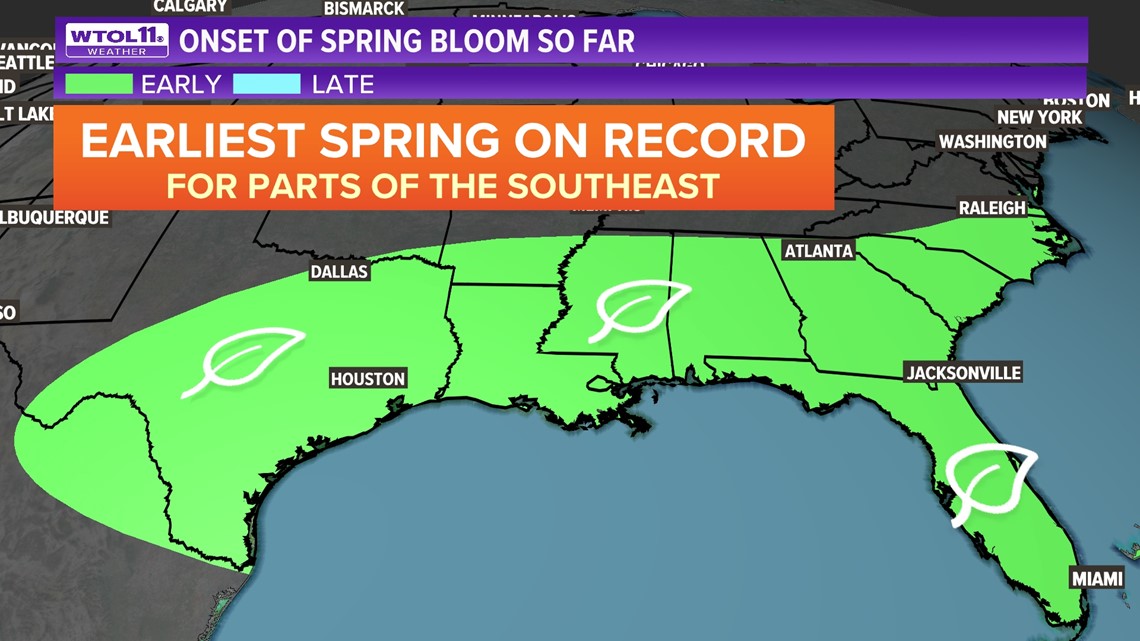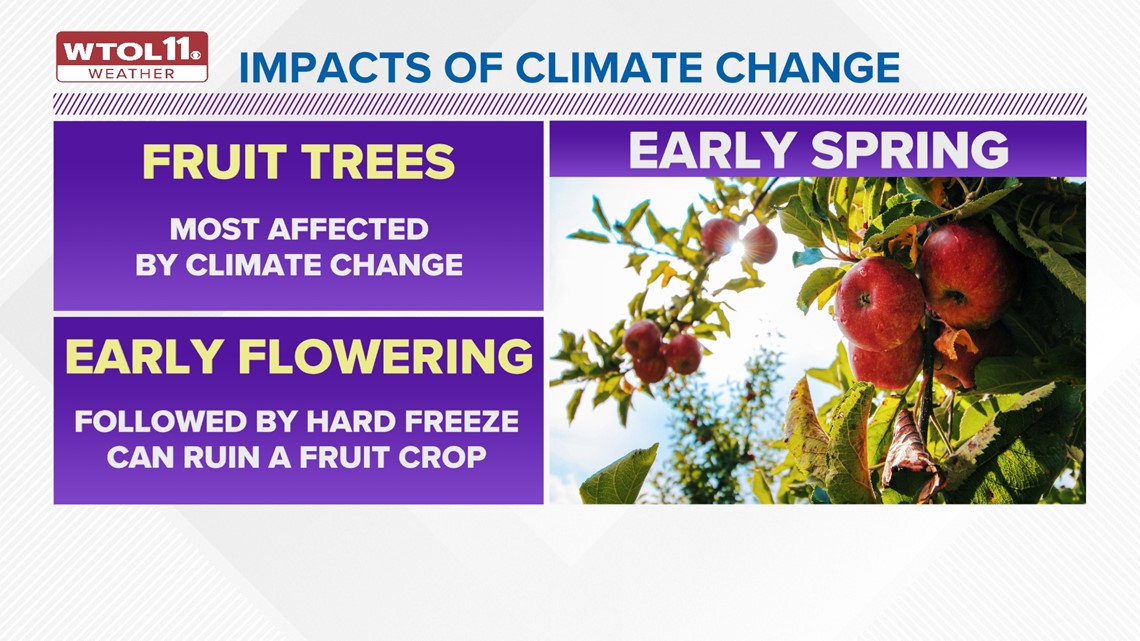TOLEDO, Ohio — With record warmth, bright sunshine and early blooms, the past week has looked and felt more like spring.
Even though we're still in February, the past few weeks have delivered spring-like weather. What role is climate change playing in this mild feel, and how is the early onset of spring weather impacting our ecosystem? We'll explain in this week's edition of Climate Friday.
First, let's recap this unseasonably warm week of weather. February has already dealt out six days over 50 degrees and more are likely during the latter half of the month. The warmest days of the month? Both Feb. 9 and 15 brought 62-degree spring-like warmth.
Overall, this month is 6 degrees above-average. This warmer trend will gradually shift toward more seasonable weather, but the month of February will likely still go down as a warm one. This month follows a historically mild January that was a whopping 7.6 degrees warmer than average.
Climate change is making winter warmth more common blurring the line between winter and spring.
So how is this early spring warmth impacting our ecosystem? Viewers across northwest Ohio and southeast Michigan have already reported photos of daffodil blooms in February. These early signs of spring represent the fingerprint of climate change.
The spring season has prematurely started across much of the southeastern United States, including areas from Texas and Louisiana to Georgia and South Carolina. These states have already recorded a historically early bloom that has brought early flowering for many plants. Though these southern areas see signs of spring far sooner than the Midwest, this trend toward an early onset of spring will likely continue for much of the northern U.S.


Abundant scientific research has been conducted on the impacts of climate change on spring blooms. One study found that a 1-degree rise in temperatures causes a 2.3-day earlier spring bloom. And that's just one degree of warming.
In Toledo, winter weather has grown 2-3 degrees warmer in the past decade alone, representing a four-to-seven day shift in the spring bloom. Over the course of decades, this seemingly small change has compounded into a vast shift in the spring season.
This change has been observed by researchers at Cambridge University, who compared spring flowering records dating all the way back to early botanists of the mid-1700s. Overall, they found that most plants flower a full month earlier than in centuries past. This change has been noticeable in the herb family, which flowers 32 days earlier than the baseline set before the Industrial Revolution and anthropogenic climate change.
So what's the real-world impact of this early onset of spring? Let's take apples for example. Mild winter weather has caused the premature flowering of apple trees in Ohio and Michigan, sometimes as early as mid-February. The problem arises when a hard freeze strikes after an early flowering.


Frigid temperatures can kill an entire apple crop that has flowered early. Studies have shown that a temperature of 28 degrees will kill around 10% of an apple crop. A hard freeze of 25 degrees will kill a substantial 90% of the crop.
The colder the temperatures, the greater the magnitude of freeze-related impacts. Local apple farms, including MacQueen Orchards, have dealt with the financial hardship of losing an apple crop due to fluctuations in February weather.
Lastly, early spring weather can cause an ecological mismatch, or an imbalance between the natural equilibrium between plants and animals in the ecosystem. Pollinators are hardwired to do their necessary job at a specific time of the year.
Though the blooming of spring flowers has grown earlier, pollinators have not fully adapted to climate change. An ecological mismatch occurs when a pollinator arrives to find that the spring bloom is already gone due to the premature onset of warm weather.
This phenomenon also affects monarchs, who lay eggs on milkweeds. Changes in the onset of flowering of the milkweed plant has impacted the reproductive patterns of monarchs. Time will tell if animals are able to successfully adapt to shifts in climate that will grow more pronounced in the future.
This past week has exemplified a big shift in climate toward an earlier spring, with mild weather growing more common in February. Though the weather will briefly turn cooler, the effects of the recent stretch of warm weather have already manifested themselves on these early signs of spring.
Whatever the rest of winter and start of spring has in store, you can trust the WTOL 11 weather team to keep you updated.
RELATED VIDEO

